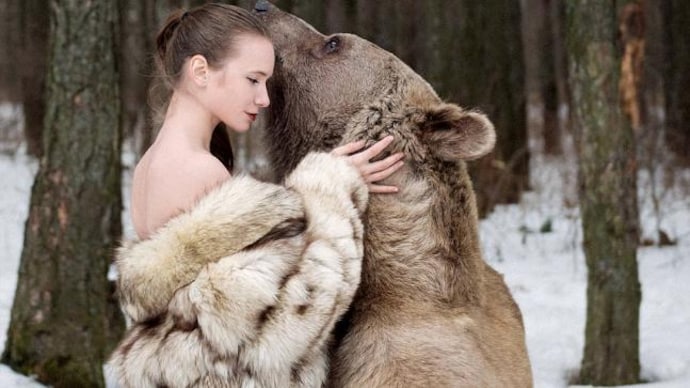6 ugly facts about the animal fur industry that will tear you apart
Under the Chinese law, animals on fur farms are considered economic animals, “a tool for human use and source of income,” a researcher told Nat Geo.

Fur farming is probably the worst form of animal cruelty, and the utmost violation their rights. Whether it came from an animal on a fur farm or one who was trapped in the wild, every fur coat, trinket, and a bit of trim caused an animal tremendous suffering -- and took away a life.
Nearly two-thirds of women's 2016 fall fashion collections featured fur, according to the International Fur Federation.
Here are 6 ugly animal fur industry facts that will tear you apart

1. Animals used for fur production
- Many different animals can be raised in captivity for the fur trade from minks and foxes to chinchillas, seals and racoons
- These are in addition to the myriad species that are trapped from the wild, including bobcats, bears, beavers, lynxes, sables, seals, weasels, and even dogs and cats
2. Fur market leader: China
- Mink is by far the most popular farmed fur, and Chinese minks dominate the market
- In 2014, the country produced 35 million pelts (the unit used to measure the skinned animals) which accounted for 40 per cent of the entire market
- Cheap labour in China has allowed fur farming to grow, according to a paper published by the Animal Legal and Historical Centre at Michigan State University College of Law, which means that many more animals are likely subjected to inhumane conditions
China has virtually no regulations protecting such animals
- wrote Lesley Peterson, the paper's author

3. Poor welfare of animals
- Chinese fur farming is virtually unregulated when it comes to animal welfare
- A 2005 report by Care for the Wild, a U.K.-based animal welfare non-profit, found animals that were kept in small, dirty cages exposed to the rain and sun, experienced rough handling, and suffered high infant mortality rates
- The investigation found poor welfare of the animals
- On fur farms -- even the more regulated ones in Europe, the US, and Canada -- minks are confined to relatively small wire cages with little enrichment
- Under Chinese law, animals on fur farms are considered economic animals, "a tool for human use and source of income," a researcher told Nat Geo

4. Other fur producing leaders
- The next biggest producer, Denmark, produced 17.8 million in 2014, according to Fur Europe, the umbrella organization that represents Europe's fur industry, followed by Poland (8.5 million), the Netherlands (5.5 million), and Finland (2.5 million)
- The US, also a major producer, contributed about 3.75 million mink pelts, the US Department of Agriculture reported. 50 per cent of US's fur comes from China
5. European fur farms: Relatively better
In the 2000s, leaders in the European fur industry began noticing that customers were demanding reassurance about the welfare of animals raised to make their garments.
- The European Council, an arm of the EU, placed a few demands on fur farms. One of the council's directives state that an animal can't be farmed unless it can be kept "without detrimental effect on its health or welfare"
- The Council of Europe, a non-EU body, issued recommendations in 1999 for protecting animal welfare on fur farms, but recommendations do not have the force of law
- WelFur, a joint effort between the European Fur Breeders Association and the International Fur Federation, rolled out last year with guidelines that cover feeding, housing, health, and behaviour of the animals to protect their welfare
6. Bans on fur farming
- Great Britain, Austria, Slovenia, Croatia, Bosnia and Herzegovina, Slovenia, and the Netherlands have passed bans on fur farming (the Dutch ban has been appealed to the Supreme Court)
- Switzerland has such strict regulations that fur farming isn't pursued there, and several other countries have passed bans on the farming of certain species
Interested in General Knowledge and Current Affairs? Click here to stay informed and know what is happening around the world with our G.K. and Current Affairs section.
To get more updates on Current Affairs, send in your query by mail to education.intoday@gmail.com
